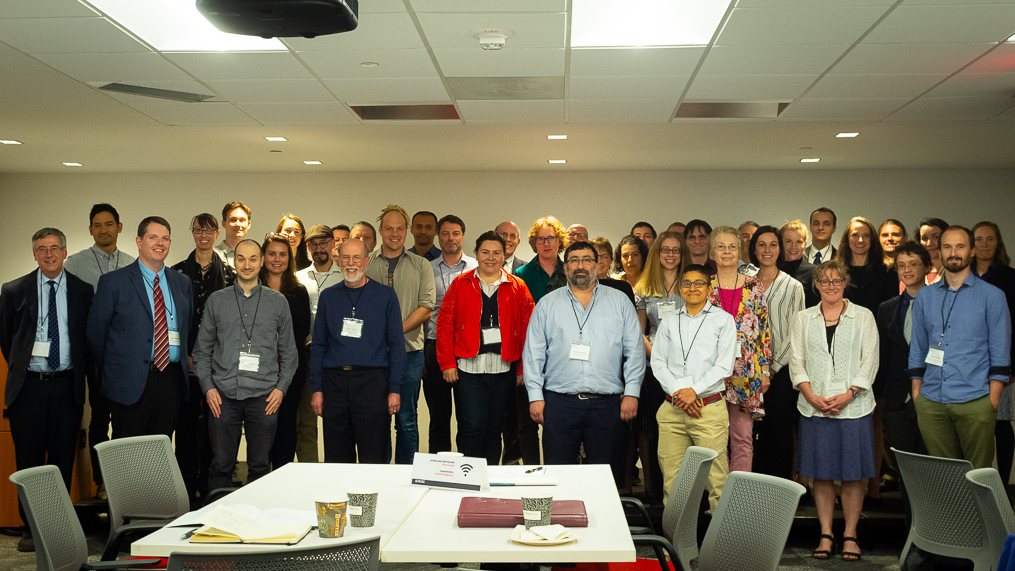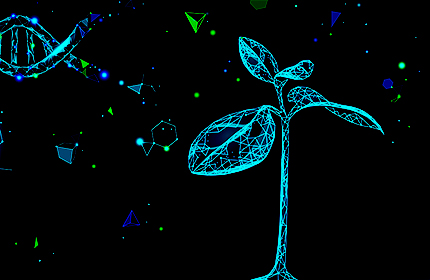Gene Drive Modeling Conference
-

June 11, 2019-June 12, 2019
740 Fifteenth Street NW
Washington, DC, USA
Gene drive technology refers to any of a set of similar mechanisms that can be engineered to drive inheritance of an allele through a population through higher transmission from parents to offspring than predicted by Mendelian inheritance. The potential applications of this technology in agriculture are many and include uses for pest, disease, and weed control. Because field-testing of gene drives in the environment is problematic, mathematical modeling of gene drives will be important in understanding their potential environmental impacts. The Agriculture & Food Systems Institute organized the Gene Drive Modeling Conference to bring together regulators, risk assessors, modelers, and biologists who understand gene drive technology to discuss the applicability of models for the environmental risk assessment of gene drive organisms, as well as to identify criteria for establishing the quality of information that will be needed to inform future risk assessments of gene drives.
The conference was made possible through a grant from the USDA’s National Institute for Food and Agriculture Biotechnology Risk Assessment Research Grants Program for the purpose of fostering a discussion between U.S. regulatory agencies and scientists in the field of modeling for gene drive research.
Gene Drive Modeling Webinar Series
Leading up to the conference, a series of online seminars were organized to provide baseline information and facilitate discussions during the event. View recordings of these three webinars by clicking through the tabs below.
Adding Biology to Mathematical Models of Gene Drive Spread in Populations: A Case Study of Engineered Underdominance
Dr. Sumit Dhole
Department of Entomology & Plant Pathology, North Carolina State University
Understanding how gene drives would behave in natural populations is critical if this tool is ever to be used for the variety of applications that it can potentially serve. However, a multitude of factors currently preclude gene drive experiments in natural populations. Mathematical models can prove useful in elucidating the expected behavior of gene drives in response to a number of biological factors and can also reveal patterns of gene drive spread that are too complex to be intuitively predicted. The assumptions and details of a mathematical model influence the applicability of the results to natural populations, similar to the role that experimental conditions play for laboratory experiments. Part of the Gene Drive Modeling Conference Seminar Series, this presentation by Dr. Sumit Dhole will focus on how simple mathematical models can be used to study expected gene drive behavior, and how biological details can be added to simple models to address the effects of factors like migration and population-density dependence. A particular gene drive, called Engineered Underdominance, which has potential for spatially restricted population alteration will serve as a case study.
Simple and Complex Models: Their Roles in the Evaluation of Gene Drives
Dr. Alun Lloyd
Department of Mathematics, North Carolina State University
Mathematical models are a widely-used tool to assess the feasibility and effectiveness of gene drives and other related biocontrol approaches. As part of the Gene Drive Modeling Conference Seminar Series, this presentation by Dr. Alun Lloyd will cover modeling work that has been carried out for several novel strategies, illustrating the use of a number of different models as the projects move along the path from theoretical proposals, through lab-based studies, to field deployment. Of particular note is the role of both simple and more complicated mathematical models at various stages of this process. Dr. Lloyd will also discuss the benefits and drawbacks of different approaches, together with methods that can be used to quantify uncertainty in model predictions that result from uncertainty in model parameters.
Informing Risk Assessment with the Mosquito Gene Drive Explorer (MGDrivE)
Ms. Valeri Vasquez
Berkeley Institute for Data Science, University of California, Berkeley
May 20, 2019 | 1:00 pm – 2:00 pm
The advent of CRISPR/Cas9-based gene-editing and its demonstrated ability to streamline the development of gene drive systems has reignited interest in the application of this technology to disease-transmitting mosquitoes and insect agricultural pests. The versatility of the technology has also enabled a wide range of gene drive architectures to be realized, creating a need for their population-level and spatial dynamics to be explored using mathematical models. The Mosquito Gene Drive Explorer (MGDrivE) is a simulation framework designed to investigate the population dynamics of a variety of gene drive systems as they spread through spatially-explicit insect populations. While MGDrivE was primarily designed for application to the mosquito vectors of malaria and arboviruses such as dengue, Zika, and chikungunya, its modularity means that, with a few small changes, it could be applied to insect pests of agricultural significance, such as the medfly, spotted wing drosophila, or the Asian citrus psyllid vector of Citrus Huanglongbing. This online seminar will focus on the modules of the MGDrivE framework, including assumptions, uncertainties, and planned modifications for agricultural pests. The presenters will demonstrate the tool’s application in a few toy scenarios and discuss relevance to important risk assessment questions in the agricultural space.
Agenda
Day 1 - Tuesday, June 11, 2019
8:00 am
Opening Remarks - Purpose of the Workshop
Andrew Roberts, Agriculture & Food Systems Institute
Session 1: Introduction to Gene Drives
8:15 am
Mitigating the Risk of Unintended Spread of a Gene Drive
Kevin Oh, United States Department of Agriculture
Valentino Gantz, University of California San Diego
Genetic containment of a mouse gene drive using locally fixed alleles; modeling unintended gene drive spread.
8:45 am
Potential Applications of Gene Drives in Agriculture
Max Scott, North Carolina State University
Agriculture pests that could be targeted through gene drives; what are the limitations and constraints on agricultural applications?
Session 2: Regulatory Considerations
9:15 am
Coordinated Framework for the Regulation of Biotechnology
Elizabeth Milewski, United States Environmental Protection Agency
How gene drives fit into existing regulatory frameworks.
9:45 am
International Perspectives
Owain Edwards, Commonwealth Scientific and Industrial Research Organisation
Transboundary movement of genetically modified organisms; the Convention on Biodiversity (CBD) and gene drives.
10:15 am
Integrating Models into Risk Assessment
Andrew Kanarek, United States Environmental Protection Agency
How mathematical models are currently used for risk assessment.
10:45 am
Tea Break
Session 3: Modeling for Gene Drives
11:15 am
Evolution of Resistance Against CRISPR/Cas9 Gene Drive
Philipp Messer, Cornell University
Strategies that could facilitate the engineering of drivers with lower resistance potential.
11:45 am
Daisy-Chain Gene Drives for the Alteration of Local Populations
Rey Edison, Esvelt Group, Massachusetts Institute of Technology
Modeling of mechanisms that might be used to limit the geographic spread of gene drive organisms.
12:15 pm
Tethered Homing: Expanding the Power of Threshold Drives for Local Population Alteration
Sumit Dhole, North Carolina State University
The use of tethered homing to get around the limitations of threshold drives without compromising spatial restriction.
12:45 pm
Lunch Break
Session 4: Introduction of Case Studies for Discussion
2:00 pm
Informing Risk Assessment with the Mosquito Gene Drive Explorer (MGDrivE)
Valeri Vasquez & John Marshall, University of California, Berkeley
2:45 pm
Simple and Complex Models: Their Roles in the Evaluation of Gene Drives
Alun Lloyd, North Carolina State University
3:30 pm
Tea Break
4:00 pm
Discussion
All
4:45 pm
Review of Case Studies and Instructions for Breakout Groups
John Teem, Agriculture & Food Systems Institute
5:15 pm
Adjourn Day 1
Day 2 - June 12, 2019
8:00 am
Welcome and Review of Day 1
John Teem, Agriculture & Food Systems Institute
Breakout Sessions
8:15 am
Review of Instructions for Breakout Groups
John Teem, Agriculture & Food Systems Institute
8:30 am
Breakout Groups
10:30 am
Tea Break
Plenary Review
11:00 am
Discussion of Breakout Group Results
12:00 pm
Lunch Break
1:30 pm
Panel Discussion
All
2:30 pm
Lessons Learned and Future Prospects
Based on the prior two sessions, participants will be asked to identify areas of useful research investigation related to gene drive modeling and criteria for establishing gene drive models that could inform risk assessments
4:00 pm
Tea Break
4:30 pm
Recap and Final Discussion
Andrew Roberts
Agriculture & Food Systems Institute
5:30 pm
Adjourn




